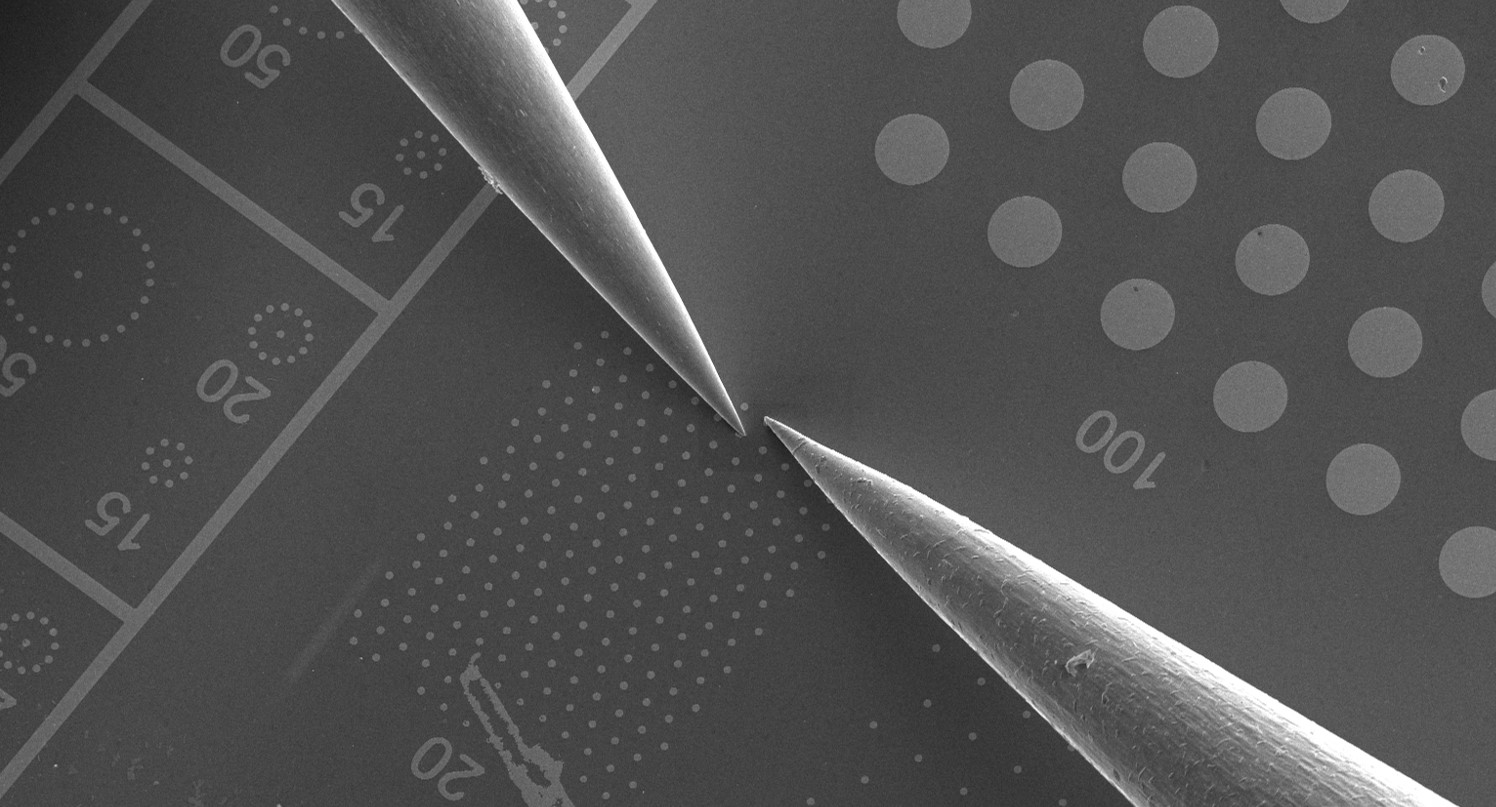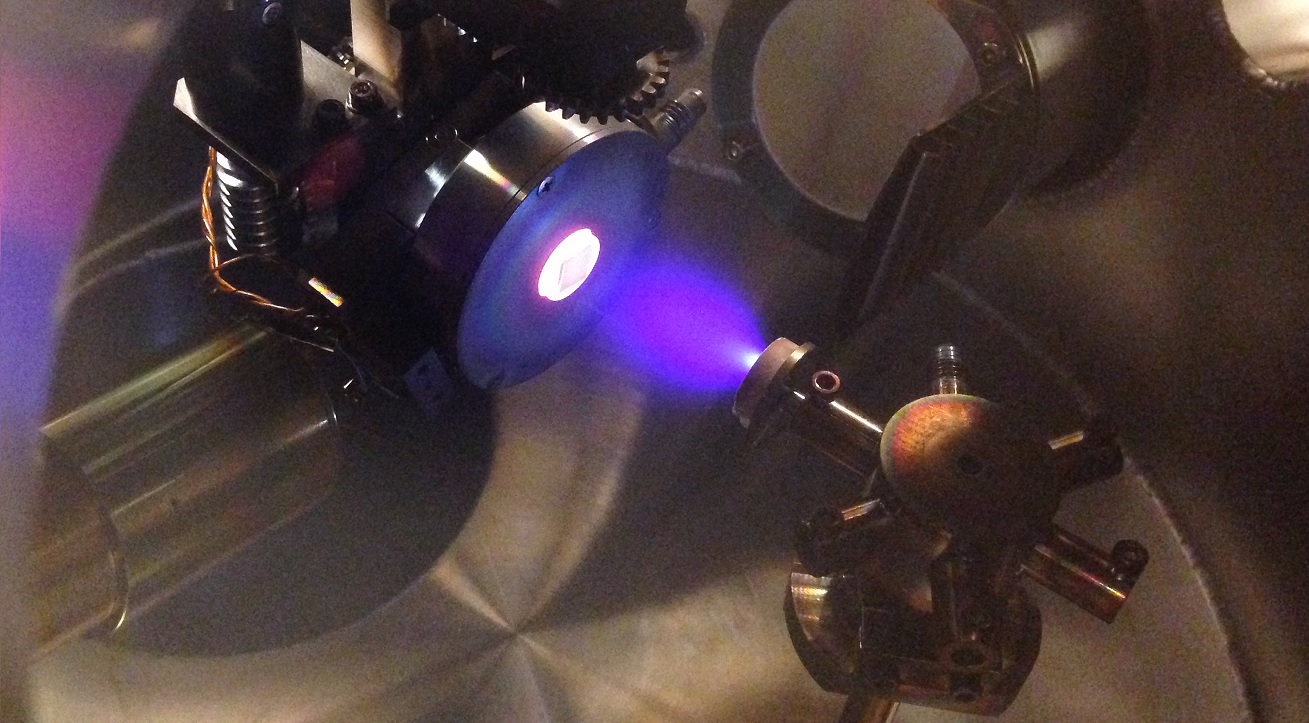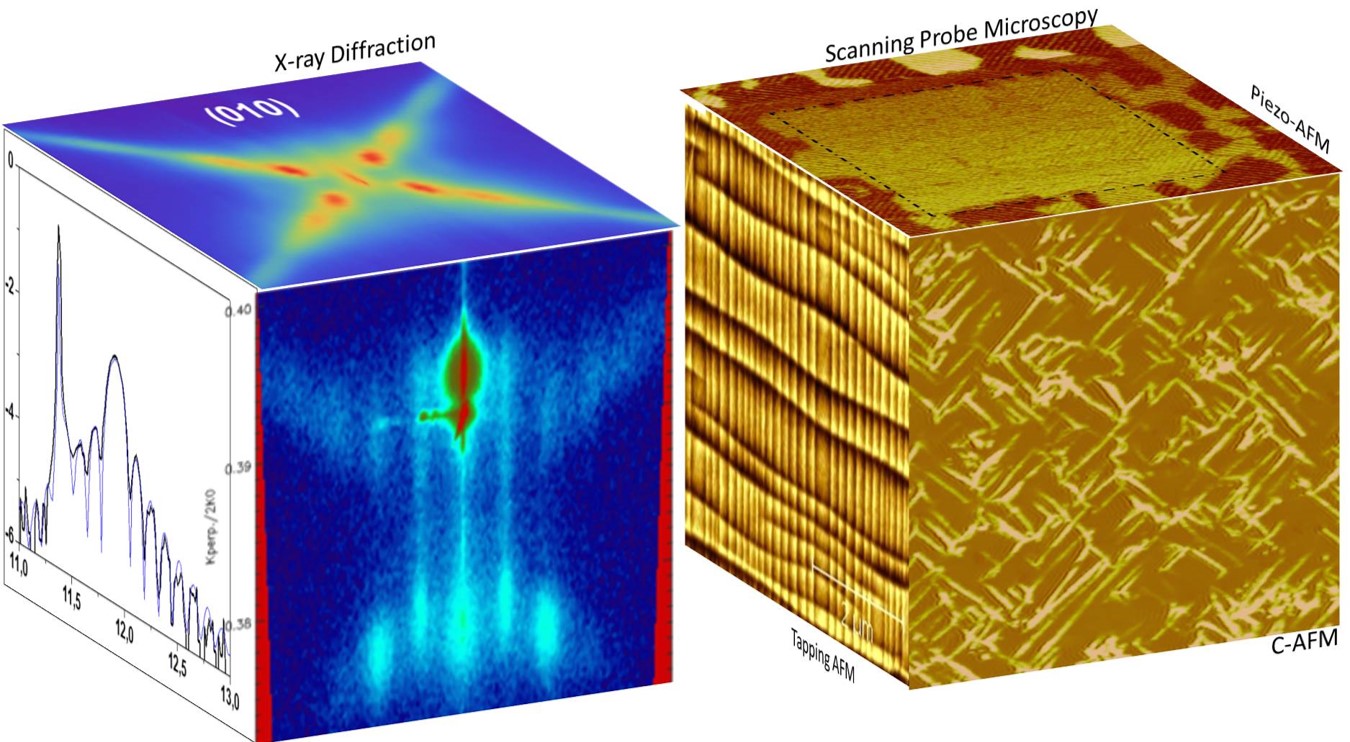August 2023
Sanne Berg successfully defended her PhD thesis entitled Networks of Functional Metal Oxides Towards Neuromorphic Materials. Congratulations!
August 2023
Johanna van Gent González is one of 3 finalists for the KNCV Golden Master Award 2023. https://www.sciencelink.net/mensen-and-meningen/finalisten-golden-master-award-2023/21448.article
January 2023
Paper by Yingfen Wei on synaptic behaviour of Hafnia ferroelectrics. This paper has been selected as one of the NCE Highlights of 2022. https://iopscience.iop.org/journal/2634-4386/page/2022_Highlights
September 2022
The paper by Qikai Guo on a phenomenological description of metals is published in Phys. Rev. B.: https://journals.aps.org/prb/abstract/10.1103/PhysRevB.106.085141
Rene Fransen tells why we are so proud of this work. You can find this in ScienceLinX and eurekalert.org
The links are here:
https://www.rug.nl/sciencelinx/nieuws/2022/09/a-fresh-look-at-metals-reveals-a-strange-similarity?lang=enGex
https://www.eurekalert.org/news-releases/963858
June 2022
Mart Salverda's work on compact neuristors made of epitaxial TbMnO3 films is published in Journal of Physics D: https://iopscience.iop.org/article/10.1088/1361-6463/ac71e2/meta
May 2022
Ruben Hamming Green
Ruben's CogniGron-IBM Fellowship is featured in ScieneLinX: https://www.rug.nl/sciencelinx/nieuws/2022/05/getting-a-phd-through-the-cognigron-ibm-fellowship
March 2022
Foelke Janssen receives the the prize for the Best Poster Presentation at the NanoGe conference on
Materials, Devices and Systems for Neuromorphic Computing (MatNeC22): https://www.rug.nl/research/fse/cognitive-systems-and-materials/news/newsitems/2022/20220329-matnec22-pp
February 2022
New Paper by Silang Zhou on the first thin films alpha-quartz Si1-xGexO2 is now published in Scientific Reports: https://www.nature.com/articles/s41598-022-05595-z
January 2022
Silvia Damerio successfully defended her PhD thesis! Congratulations!
December 2021
New paper by Silvia Damerio on the spin Hall magnetoresistance in the aniferromagnet CaFe2O4 in collaboration with the group of Prof. Bart van Wees published in Advanced Electronic Materials: https://doi.org/10.1002/aelm.202100963
November 2021
Many congratulations to Jan Rieck for receiving the APL Materials Excellence in Research Award, obtained as first author of a paper on his master project work on memristive devices with Prof. Regina Dittmann at the Forschungszentrum Jülich. Read more about it here.
October 2021
New paper by Ewout van der Veer in collaboration with Mónica Acuautla (ENTEG) is out: https://link.springer.com/article/10.1007%2Fs10971-021-05651-6
Jordi Antoja Lleonart successfully defended his PhD thesis! Congratulations!
September 2021
Qikai Guo successfully defended his thesis with the cum laude distinction. Congratulations!
August 2021
Qikai Guo's work showing a hidden metal-insulator transition and Planckian dissipation in Nickelate thin films has been published in npj Quantum Materials:
https://www.nature.com/articles/s41535-021-00374-x
July 2021
Silang Zhou's first paper on the crystallization of GeO2 quartz films is published in Acta Materialia: https://www.sciencedirect.com/science/article/pii/S1359645421004493
April 2021
First operando experiments applying electric fields inside the TEM on hafnia-based ferroelectrics by Pavan Nukala et al. published in Science: https://science.sciencemag.org/content/early/2021/04/14/science.abf3789
February 2021
First work on in-situ TEM of hafnia-based ferroelectrics by Pavan Nukala et al., in collaboration with Majid Ahmadi and Bart Kooi's team is out: https://aip.scitation.org/doi/10.1063/5.0035714
New paper by Jan Rieck together with the group of Regina Dittmann in Juelich has been published in APL Materials: https://doi.org/10.1063/5.0035707
Our new paper by Cynthia Quinteros, Jordi Antoja Lleonart and Prof. Beatriz Noheda has been published in Condensed Matter: https://doi.org/10.3390/condmat6010007
December 2020
New paper on how to stabilize the rhombohedral phase of ferroelectric hafnia-based thin films, led by Pavan Nukala and Yingfen Wei, has been published: https://www.tandfonline.com/doi/full/10.1080/00150193.2020.1791658
November 2020
New review and perspective article on polymer templating of multifunctional oxide nanostructures by Jin Xu, Sanne Berg et al. published in Journal of Applied Physics. This is the result of a long lasting collaboration with the group of Prof. Katja Loos. Read the article here.
July 2020
Prof. Beatriz Noheda has won the prestigious Robert E. Newnham Ferroelectrics Award for her ‘outstanding contributions to the understanding of the giant piezoelectricity in lead zirconate titanate and ferroelectric relaxors, based on her discovery of their low symmetry phases’. Read more here.
July 2020
Our paper on the ALD growth of SiO2-GeO2 multilayers by Jordi Antoja-Lleonart et al. has been published in Applied Physics Letters: https://doi.org/10.1063/5.0009844
June 2020
Our paper on the tunable resistivity exponents in the metallic phase of epitaxial nickelatest by Qikai Guo et al. has been published in Nature Communications: https://doi.org/10.1038/s41467-020-16740-5
Our paper on the magnetic structure of CaFe2O4 thin films by Silvia Damerio et al. has been published in npj Quantum Materials: https://doi.org/10.1038/s41535-020-0236-2
February 2020
Piezo-tile developed as a collaboration with Mónica Acuautla (ENTEG) is already counting steps in Zuidhorn. For details, see here.
February 2020
Pavan Nukala receives the Outstanding reviewer award from Acta Materialia in recognition of his excellent service as a reviewer for the Acta Journals in 2019
January 2020
Paper on transitional ferroelectrics has been highlighted in Scilight: https://aip.scitation.org/doi/10.1063/10.0000632
The ACS LiveSlides™ presentation for our recently published article "Direct Epitaxial Growth of Polar (1-x)HfO2(x)ZrO2 Ultrathin Films on Silicon" by Pavan Nukala et al. is now available at: http://pubs.acs.org/doi/suppl/10.1021/acsaelm.9b00585
December 2019
Our new work on multiferroic tunnel junctions based on ferroelectric (FE) hafnia is out: https://www.nature.com/articles/s41535-019-0201-0
August 2019
Paper on periodicity doubling cascades in ferroelastic domains chosen as Editor's suggestion in Physical Review Letters and as Viewpoint subject in Physics
January 2019
Pavan Nukala wins the Best oral presentation award at the 2019 "Fundamental Physics of Ferroelectrics Workshop” in Tampa, Florida, USA!
October 2018
New ferroelectric phase of Hafnia published in Nature Materials
Nanosized ferroelectrics become a reality
June 2018
Mónica Acuautla has gained an Assistant professorship in Engineering Materials at the neighbour ENTEG institute. Congratulations, Mónica, on this achievement! It has been an absolute pleasure to have you in the group and we look forward to continue collaborating with you.
May 2018
Pavan Nukala obtains a prestigious Marie Curie Fellowship and joins the group. Thank you, Pavan, for choosing us!
March 2018
Cynthia Quinteros, expert on dielectrics and resistive switching, joins the group. Welcome, Cynthia!
February 2018
Beatriz Noheda is appointed as director of the new Cognitive Systems and Materials center (CogniGron)
June 2017
Our work within Nanolab NL featured in Youtube films
NanoLabNL: Rijksuniversiteit Groningen - Beatriz Noheda
NanoLabNL: Atomic Scale Control to Enhance Nanotechnology
May 2017
Our collaboration with the neighbor town hall Zuidhorn appears in the news
July 2016
NWO-Veni grant for Dr. Saeedeh Farokhipoor
Perspective article on ferroelectric chalcogenides by B. Noheda and B.J. Kooi appears in Science
May 2016
TOP-PUNT grant of 1.7 M€ for Beatriz Noheda
January 2016
Cover of January 2016 issue of Advanced Electronic Materials features our paper Arnoud Everhardt et al. "
Ferroelectric domain structures in low-strain BaTiO3 "
December 2015
Two papers on Jeroen Heuver’s thin films of multiferroic spinel CoCr2O4 are published in Physical Review B:
J.A. Heuver et al. (Strain-induced magnetic anisotropy in epitaxial thin films of the spinel CoCr2O4 ) and A. Aqeel et al. (Spin-Hall magnetoresistance and spin Seebeck effect in spin-spiral and paramagnetic phases of multiferroic films)
November 2015
Paper by Arnoud Everhardt et al. "
Ferroelectric domain structures in low-strain BaTiO3 " published online in Advanced Electronic Materials.
February 2015
Oleskiy Nesterov successfully defends his thesis "Control of Periodic Ferroelastic Domains in Ferroelectric Pb1-xSrxTiO3 thin films for nanoscale memory devices"
November 2014
Paper by Saeedeh Farokhipoor et al. " published in Nature:
DOI: 10.1038/nature13918
June 2014
Paper accepted in Nature Communications: The paper on "Super switching and control of in-plane ferroelectric nanodomains in strained thin films" by Sylvia Matzen, Oleksiy Nesterov, Gijsbert Rispens, Jeroen Heuver, Mike Biegalski, Hans Christen, and Beatriz Noheda to appear in July in
Nature Communications .
December 2012
Beatriz Noheda is appointed member of the Editorial board of Applied Physics/Journal of Applied Physics for the next 3 years.
December 2011
Beatriz Noheda has been elected Fellow of the American Physical Society. For more information see RUG, Zernike Institute or FOM press releases.
October 2011
Paper on "Flexoelectric rotation of polarization in ferroelectric thin films" by Gustau Catalan, Ard Vlooswijk, Gijsbert Rispens and Beatriz Noheda (SSME group) and collaborators at Twente, Barcelona and Toulouse, has been published in Nature Materials (Advanced online publication in October 16th). See also press release.
August 2011
Paper on "Conduction at 71° domain walls in BiFeO3 thin films" by Saeedeh Farokhipoor and Beatriz Noheda has been accepted in Phys. Rev. Letts.
June 2011
The University of Groningen is ranked 4th in terms of citations and impact on Materials Science according to Thomson Reuters (June 2011). See ranking.



